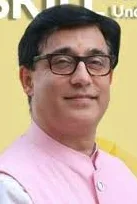Sarsanghchalak (PP) Shri Mohan Bhagwat recently reminded us that “living in harmony is our culture”—asserting that despite centuries of diversity, the people of undivided India have shared the same DNA for over 40,000 years.In his address, he reminded the nation that India’s strength has always been in its unity, when Indians stand together, no power can defeat us; when divided, even small challenges overwhelm us.
This timeless truth was well understood by those who sought to rule India. Ever since the British set foot on Indian soil, they discovered one truth that helped them govern a vast and diverse land with a small foreign elite. India could not be conquered by force alone, but it could be controlled by division. What started as a commercial enterprise of the East India Company soon became an empire built on fracturing Indian society along caste, religion, language and region.
The Revolt of 1857 shook the foundations of British rule in India. What unnerved the colonial masters most was not just the scale of the uprising but the unity it revealed. Hindus, Muslims and different jatis fighting shoulder to shoulder against a common oppressor. Bahadur Shah Zafar, a Muslim emperor, became the symbolic head, while leaders like Rani Lakshmi Bai, Nana Saheb and Tantia Tope rallied Hindu forces. For the British, this was a nightmare: a united India rising in defiance.
Determined never to face such unity again, the colonial state perfected its strategy of divide and rule, using censuses to harden caste lines, introducing separate electorates to pit communities against each other and playing language and region as tools of division. The lesson they drew from 1857 was clear: Indians together were unbreakable, but divided, they could be ruled.
The Partition of Bengal in 1905 was one of the first deliberate attempts, splitting a thriving province along religious lines to weaken nationalist unity. The Morley-Minto Reforms of 1909 institutionalized communal politics by granting separate electorates to Muslims and others, ensuring that Indians no longer voted as one people but as fragmented communities.
The 1932 Communal Award, which extended separate electorates even to depressed class, almost cemented divisions within Hindu society until the Poona Pact tried to salvage unity. Even the colonial census, starting in 1871, turned India’s fluid and overlapping caste identities into rigid, politicized categories—laying the seeds of caste-based mobilization that continue to this day.
The British actively encouraged communal divisions by supporting the formation of the All India Muslim League in 1906, presenting it as the sole representative body of Muslims, even though the Indian National Congress already included leaders from all communities. By promoting the League and granting it separate political weight, the British deepened Hindu-Muslim divides and institutionalized communal politics, which later became a major factor in the partition of India.
The British perfected the art of “divide and rule” after 1857, kept Indians fighting amongst themselves so they would never unite against the empire. And it worked, for nearly two centuries.
Let me share another striking example of Sylhet, a Hindu-equal majority district in Assam before Partition. In the crucial 1947 Sylhet referendum, where people had to decide whether to remain with Assam or join East Bengal (Pakistan), Dalit votes became decisive. Jogendra Nath Mandal, a prominent Dalit leader during Partition, believed that Dalits might have a better future in Pakistan since, unlike caste Hindus, Muslims did not practice untouchability. Convinced by Jinnah, he allied with the Muslim League and urged Dalits to support Pakistan.
Mandal, believed Muhammad Ali Jinnah’s promise that Dalits would find greater dignity in Pakistan than in “upper-caste Hindu–dominated” India. On Jinnah’s instructions, Mandal campaigned among Dalits, many of whom voted for Pakistan. Despite its Hindu majority, intense campaigning and communal divisions led to a narrow vote in favour of Pakistan. Families were uprooted, a vibrant culture was scattered, and Assam lost an integral part of its geography. As a reward, Jinnah appointed him Pakistan’s first Law and Labour Minister.
However, Mandal’s hopes of Dalit–Muslim unity soon collapsed. By 1950, Mandal’s dreams of Dalit-Muslim brotherhood were shattered. He realised, a little too late perhaps, that in the newly formed Pakistan, it did not matter if you were a Dalit or a caste Hindu. Being Hindu was enough to get you harmed, raped, killed or forcibly converted. Mandal’s pleas for the protection of his people fell on deaf ears.
By 1950, Hindus in East Pakistan, including Dalits, faced persecution, violence, forced conversions and mass killings. Realising the betrayal, Mandal resigned and wrote a scathing letter to Prime Minister Liaquat Ali Khan, warning that Hindus in Pakistan would either be forced to convert or exterminated. Disillusioned, he returned to India, broken by the fate of the very people he had asked to trust Pakistan.
These episodes weren’t accidents but strategic manipulations, engineered to splinter communities and curb unity and also indicates how leaders and communities misled by short-term promises ended up victims of the same divide-and-rule strategy.
Fast forward to today, and disturbingly, echoes of this colonial script have been seen resurfacing, not from imperial masters this time but from domestic political actors and their global allies who are unnerved by India’s growing unity and strength. Since 2014, under Prime Minister Narendra Modi, the BJP has steadily consolidated electoral dominance, winning a majority in 2014, expanding it in 2019 with 303 Lok Sabha seats, and securing a rare third term in 2024.
For opposition parties at home and certain international groups, this has been deeply frustrating. When a direct electoral challenge failed, the focus shifted, if Modi cannot be dismantled in a straight fight, then Hindu unity itself must be weakened.
This is where the colonial playbook resurfaces in full force. The sudden push for a caste census, not as a genuine welfare instrument but as a tool to fracture Hindu society, echoes the British-era divide-and-rule strategy. The pattern does not stop at politics; it extends into academia and activism. In 2021, the “Dismantling Global Hindutva” conference, hosted by Western universities, openly discussed strategies to “contain” Hindutva.
Western foundations, such as the Henry Luce Foundation, have funded projects that portray Hindu nationalism as a global threat, adding intellectual weight to divisive narratives. In India, remarks like Tamil Nadu minister Udhayanidhi Stalin’s call to “eradicate Sanatana Dharma” in 2023 further deepened religious fault lines. On campuses, slogans such as “Bharat tere tukde honge, Insha Allah, Insha Allah,” once heard at JNU, echoed the same rhetoric that colonial rulers would have cheered.
Even policy debates have been twisted, whether around the NRC or CAA, where genuine concerns of citizenship have often been overshadowed by fear-mongering and deliberate distortions. Regional tensions, too, are repeatedly stoked, claims that the “south subsidizes the north,” resentment toward migrant workers in Telangana or language disputes in Maharashtra. None of these are random, they mirror exactly the methods used by the British, exaggerating divisions, inflaming insecurities and preventing a united national voice.
The danger is clear, many politicians, willingly or otherwise, are playing into this old colonial experiment. They may hope for short-term political advantage, but the long-term cost is far greater, the weakening of India’s unity. The caste divide weakened India’s social fabric by eroding unity and collective strength. It fuelled mistrust among communities, stifled social mobility and restricted opportunities for large sections of society.
Politically, it was exploited by colonial powers and later by vote-bank politics, deepening divisions instead of fostering inclusivity. Economically, it curtailed talent and productivity by confining individuals to rigid roles. Above all, it distracted the nation from larger goals of freedom, progressand nation-building.Perhaps, history reminds us that unity is India’s greatest strength, the same strength that shook the British Empire in 1857 and is powering India’s rise in the 21st century.
Just as the British once exploited caste divisions to weaken India from within, today we also witness new strategies by global powers to counter India’s rise. Western nations, baffled by India’s rapid economic growth, technological advancement and increasing global influence, are attempting to create obstacles. U.S. President Donald Trump’s recent announcement of steep tariffs on Indian goods is one such indication.
These moves are not isolated trade issues, they reflect a broader pattern where global powers, threatened by India’s ascent as a self-reliant nation seek to destabilize its growth trajectory. Such external pressures remind us that unity within is the strongest shield against attempts to divide and weaken India from outside.
Perhaps, India today faces a serious risk of internal fragmentation, where the unity of the nation is constantly tested by forces that thrive on division. Whether it is the sudden push for a caste census positioned more as a political weapon than as a welfare tool or the incendiary slogans once heard in JNU, “Bharat tere tukde honge, Insha Allah, Insha Allah”, the underlying message is the same, to break India into pieces by exploiting its fault lines. If citizens are not vigilant, these wedges can deepen, creating fractures in India’s social and cultural fabric.
It reminds me one of the powerful scenes from the movie Gladiator, that I watched few years back. In Gladiator, when Russell Crowe (Maximus) is thrown into the Colosseum with other gladiators, they are expected to be slaughtered by the Roman cavalry. Instead of panicking or scattering, he shouts “Single column! Single column!”, forcing the men to stand together, shields locked, spears outward. The cavalry, used to fighting broken, disorganized individuals, suddenly meets a united force that is almost impossible to penetrate. That single act of discipline and unity not only saves their lives but also wins them respect.
India today finds itself in a similar position. External pressures, whether through economic tariffs, geopolitical manoeuvring or subtle attempts to sow social discordare designed to weaken our resolve. Yet, just as in that arena, our true strength lies in unity, standing shoulder to shoulder, transcending divisions of caste, creedand region. If we allow ourselves to scatter, we risk falling prey to those who seek to exploit our differences. But if we move as one, bound by a shared civilizational ethos and national purpose, India becomes not only resilient but unstoppable. Our unity is our shield, and our shared vision is our sword.
History shows us that forces of division thrive when people are scattered, but they fail when faced with unity. And if reports are to be believed, in the same spirit, when President Trump reportedly tried reaching out to Prime Minister Modi multiple times over stalled trade talks, Mr Modi chose not to respond, signalling that India would not be pressured or dictated to. This quiet resilience, standing firm and united like Maximus’, shows that India’s power is once again being recognized on the global stage.
The lesson for us as a society is clear, unity is our greatest shield and discipline in thought and action is the true strength of a nation. Our nation’s true strength lies in remaining resiliently united in purpose, discipline, and vision.
In Bhawani Mandir, Sri Aurobindo writes that, “India is not a piece of earth, nor a figure of speech, nor a fiction of the mind. She is a power, a godhead, a living being.”
(The Author is Founding Vice Chancellor SVSU and OSD to CM Haryana)






